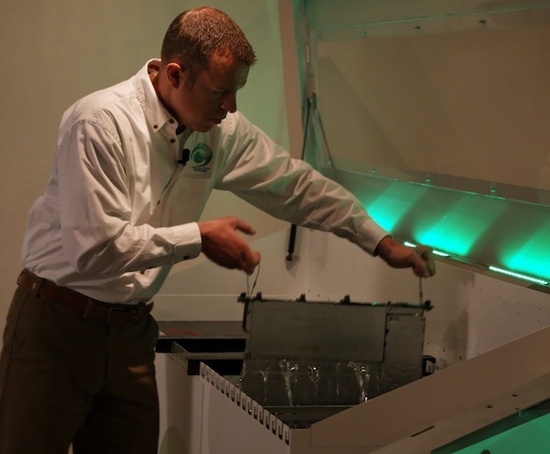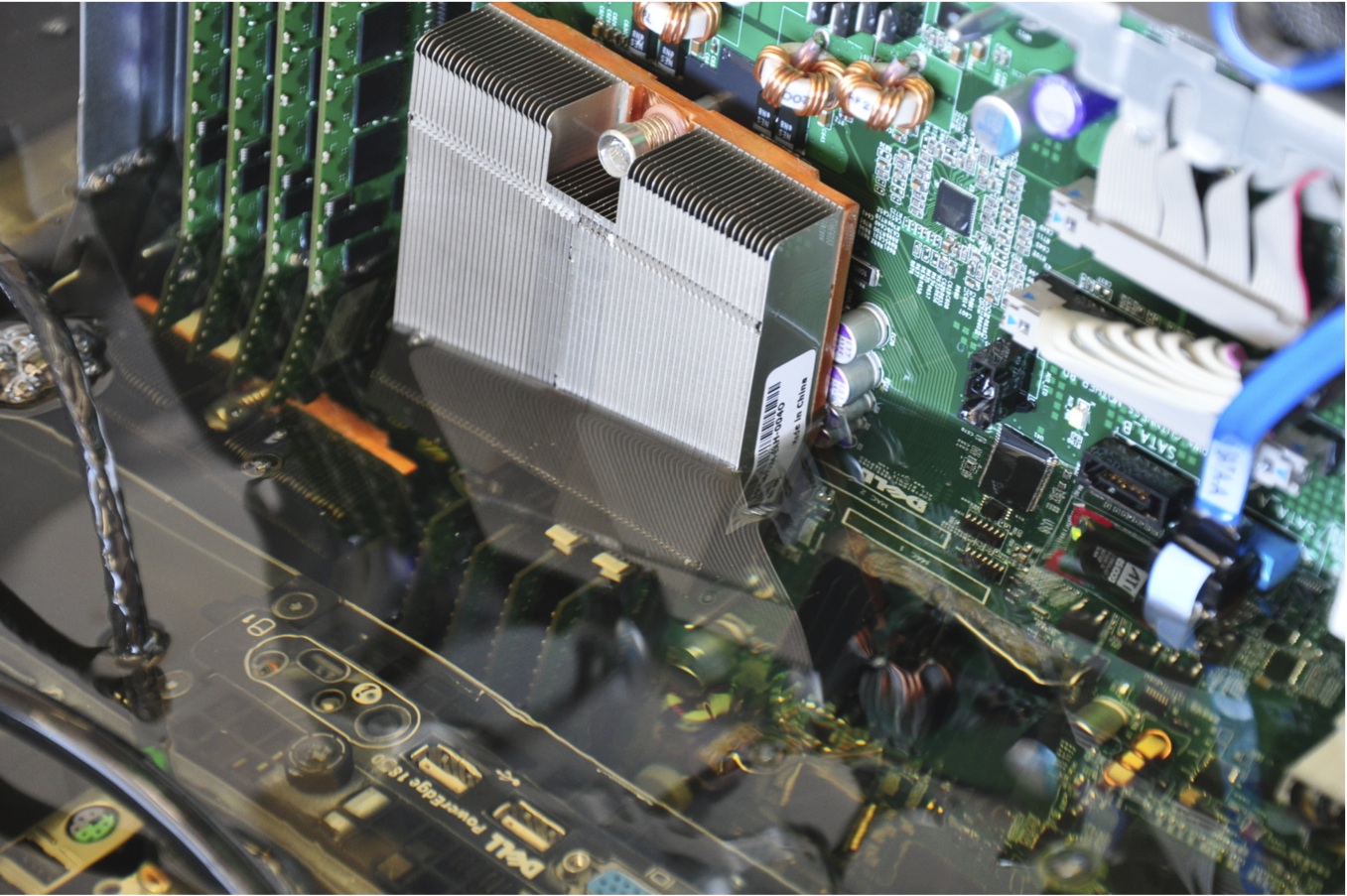Intel Uses Mineral Oil to Cool Servers, Finds Success
While mineral oil-cooled systems have been around for quite some time now, it seems like a modern iteration of the idea has caught Intel's eye. After a year of use, the company stated that it was pleased with the results of its latest server cooling endeavor. Utilizing Green Revolution's CarnotJet mineral oil cooling system, Intel was able to cut both cooling and power costs.
According to Intel, the tested servers only needed another 2 to 3 percent of server power for cooling, down from the typical 50 or 60 percent overhead of standard servers. In comparison, the world's most efficient data centers from Google or Facebook still run with about 10 or 20 percent overhead.
The major advantage of mineral oil cooling is that it is relatively cheap and can be adapted to work with a variety of systems ranging from small computers to massive servers. Since it is non-conductive, the oil doesn't short out circuits and is harmless to computer hardware. On the other hand, dunking your hardware into oil will void the warranty, and it can be difficult to clean and remove mineral oil from the hardware once it has been submerged.
The cooling alternative is definitely appealing to massive server arrays, saving precious energy and cooling costs. The only downside is that things can get a bit messy, and the oil needs to be flushed and changed every ten years or so.
Contact Us for News Tips, Corrections and Feedback
Get Tom's Hardware's best news and in-depth reviews, straight to your inbox.
-
CaedenV lol, changing the oil every 10 years is a negative? One would think that would last much longer than the servers that sit in the goop.Reply
... wish my car could last without an oil change for 10 years -
LukeCWM Are the servers continuously submerged? Or just dunked when they need to be cooled? If the former, this sounds pretty cool.Reply
However, if submerged, you lose the ability to place a fan over the hottest components. Hopefully a passive heatsink over the CPU is enough once submerged. -
Robert Pankiw LukeCWMAre the servers continuously submerged? Or just dunked when they need to be cooled? If the former, this sounds pretty cool.However, if submerged, you lose the ability to place a fan over the hottest components. Hopefully a passive heatsink over the CPU is enough once submerged.Reply
You would need to leave it submerged, because once it is removed from the oil, it heats up (quickly). Servers (and all computers) need continuous cooling, not just once every hour, or every time a process is run (processes are always running). -
LukeCWM kawininjazxThat's awesome, I'm gonna go find something to submerge my PC in.Reply
I wonder what are the cooling properties of tapioca pudding. Second thought, cooling your PC with something delicious doesn't bode well for the long-term stock of your cooling solution. =] -
spentshells I know this is pretty popular technique in the oil and gas industry where they can not afford sparksReply -
acadia11 LukeCWMAre the servers continuously submerged? Or just dunked when they need to be cooled? If the former, this sounds pretty cool.However, if submerged, you lose the ability to place a fan over the hottest components. Hopefully a passive heatsink over the CPU is enough once submerged.Reply
Why would you want or even need to put a fan on any of the components you just submerged it in mineral oil? And the mineral oil is far more efficient thermal conductor than air any day of the week. -
yes, they're submerged 24/7. interestingly enough, though, fans with strong motors can actually run in the oil (as long as they've been designed for it) to keep it circulating, since it's non-conductive.Reply


